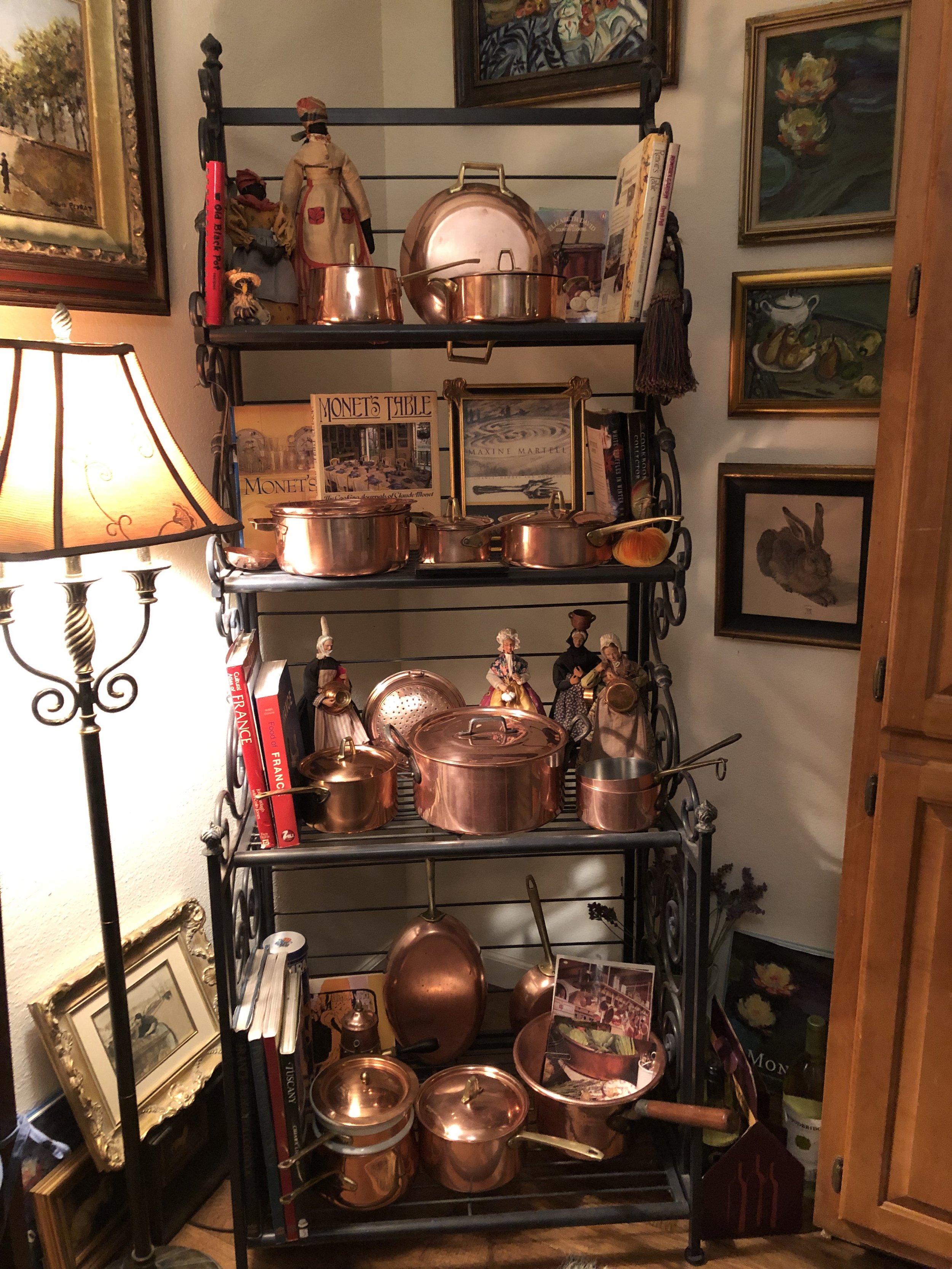Beans and Cassoulet
This January, the New York Times featured a series titled “Well’s Mediterranean Diet Week.” Readers are encouraged to eat healthy fats, whole wheat and grains, vegetables, fruit and legumes. Lots of legumes. And that brings me to the subject of beans and why I am cooking them and eating them daily.
Beans don’t always get great press, but being my father’s daughter, my kitchen and pantry are never without them. Pinto, kidney, cannellini, garbanzo, navy, black, refried and baked beans are stacked two cans high and three deep in the pantry, along with bags of dried beans as well. With them comes a sense of history and nostalgia.
The pantry once included a can of Serious Bean Company Sweet and Sassy Dr. Pepper Baked Beans. Who knew that Dr. Pepper, a drink that I grew up with during my Texas childhood, has long been a secret ingredient among top BBQ Pitmasters? It triggered memories of my father’s love of beans and a recipe for Cowpoke Beans that he sent me decades ago. Now stained and aged to the color of onionskin, it was lovingly typed on a 3x5” index card—ingredients on one side and preparation instructions on the other. A cowboy quote that Dad included spoke to the task ahead. “You’ve got to treat these little pinto beans the same way you would a newborn colt—with a lot of love and attention.”
Among the dried beans are bags of Napa Valley Rancho Gordo Heirloom Beans sent by two dear friends in Los Angeles. The gift box included: 1 lb. of French-style Green Lentils; 2 lbs. of classic Cassoulet beans (white runner beans grown in CA from original seed stock from Tarbes, France developed by local farmers to be the foundation of the classic cassoulet); White Corn Posole (prepared hominy); 1 lb. Marcella beans (a delicate Cannellini bean grown in CA from Italian ‘Soranao’ seed stock); jars of New Mexico red chili powder and Mexican oregano; and 1 lb. of Super Lucky 2020 Black Eyed Peas.
Last week, I got my stock pot out and prepared the recipe on the Cassoulet bean package and have been enjoying the creamy beans spread on toasted slices of Meyer Lemon with Rosemary Sourdough bread along with the bean broth added to soups. When I told a nurse at the Lodge where Kit now resides and has physical therapy, she asked what “cassoulet” meant. She is an incredible cook whose grandmother once owned a popular Mexican restaurant here in Nevada City. Growing up at the edges of her Abuela’s kitchen she has a deep family history of cooking with beans.
I told her it was an ambitious dish steeped in history. Cassoulet is a traditional French dish that goes back to the sixteenth century and Henry IV who saw chickens as a symbol of prosperity in France. According to Lydie Marshall in “A Passion for My Provence: Home Cooking from the South of France,” the king decreed that every French household should have a chicken cooking in a pot every Sunday.
Julia Child, co-author of the classic “Mastering the Art of French Cooking,” found cassoulet “a rich combination of beans baked with meats (pork, lamb, and homemade sausage), as much a part of southwestern France as Boston baked beans are of New England.”
Richard Olney—an American culinary writer who lived in Paris for ten years, then moved permanently to Provence after falling in love with its light, its landscape and its scents—believed there were as many cassoulets as there are cooks. In “The French Menu Cookbook,” Olney defined the dish as “a slow-cooked gratin made up of two or more separate preparations, one of which is always pork and bean stew, the others of which may be chosen among preserved duck or goose, braised lamb or mutton, and roast or braised partridge.”
To Georgeanne Brennan in “Savoring France,” cassoulet is a defining dish in the Languedoc region of Provence, stretching from Toulouse to Carcassonne to Castelnaudary. She writes, “While each city, village and family there may have its own version of the dish, it is, in essence layers of white beans that have been slowly cooked with herbs, and interspersed with layers of different cooked meats, thoroughly moistened with the cooking juices of both, topped with a final layer of breadcrumbs, and then baked until a thick crust forms and the juices begin to bubble underneath.”
Because of her interest in beans, I gave my friend at the Lodge a copy of a classic cassoulet recipe from the Time/Life series “The Cooking of Provincial France” authored by M.F.K. Fisher. I told her that if she couldn’t find duck fat at a local butcher shop that chicken, pork, and sausage will do. Chefs agree that cassoulet is time consuming and requires hearty eaters. I’m hoping she will prepare her first cassoulet to be shared with her family and friends some cold February night this winter. And when she does, I want to hear all about what ended up in her own version of this classic French country dish that I know she will love.






